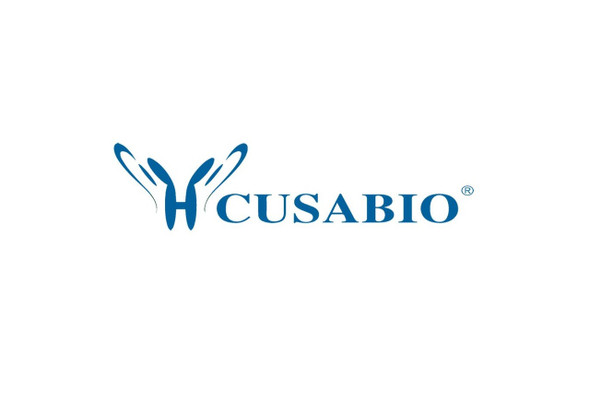Cusabio Human Recombinants
Recombinant Human Transmembrane protein PVRIG (PVRIG) | CSB-CF721905HU
- SKU:
- CSB-CF721905HU
- Availability:
- 3 - 7 Working Days
Description
Recombinant Human Transmembrane protein PVRIG (PVRIG) | CSB-CF721905HU | Cusabio
Alternative Name(s): CD112 receptor Short name: CD112R Poliovirus receptor-related immunoglobulin domain-containing protein C7orf15
Gene Names: PVRIG
Research Areas: Cell Biology
Organism: Homo sapiens (Human)
AA Sequence: MRTEAQVPALQPPEPGLEGAMGHRTLVLPWVLLTLCVTAGTPEVWVQVRMEATELSSFTIRCGFLGSGSISLVTVSWGGPNGAGGTTLAVLHPERGIRQWAPARQARWETQSSISLILEGSGASSPCANTTFCCKFASFPEGSWEACGSLPPSSDPGLSAPPTPAPILRADLAGILGVSGVLLFGCVYLLHLLRRHKHRPAPRLQPSRTSPQAPRARAWAPSQASQAALHVPYATINTSCRPATLDTAHPHGGPSWWASLPTHAAHRPQGPAAWASTPIPARGSFVSVENGLYAQAGERPPHTGPGLTLFPDPRGPRAMEGPLGVR
Source: in vitro E.coli expression system
Tag Info: N-terminal 6xHis-SUMO-tagged
Expression Region: 1-326aa
Sequence Info: Full Length
MW: 50.3 kDa
Purity: Greater than 85% as determined by SDS-PAGE.
Relevance: Cell surface receptor for NECTIN2. May act as a coinhibitory receptor that suppresses T-cell receptor-mediated signals. Following interaction with NECTIN2, inhibits T-cell proliferation. Competes with CD226 for NECTIN2-binding.
Reference: "Comparative analysis of the paired immunoglobulin-like receptor (PILR) locus in six mammalian genomes: duplication, conversion, and the birth of new genes." Wilson M.D., Cheung J., Martindale D.W., Scherer S.W., Koop B.F. Physiol. Genomics 27:201-218(2006)
Storage: The shelf life is related to many factors, storage state, buffer ingredients, storage temperature and the stability of the protein itself. Generally, the shelf life of liquid form is 6 months at -20?/-80?. The shelf life of lyophilized form is 12 months at -20?/-80?.
Notes: Repeated freezing and thawing is not recommended. Store working aliquots at 4? for up to one week.
Function: Cell surface receptor for NECTIN2. May act as a coinhibitory receptor that suppresses T-cell receptor-mediated signals. Following interaction with NECTIN2, inhibits T-cell proliferation. Competes with CD226 for NECTIN2-binding.
Involvement in disease:
Subcellular Location: Cell membrane, Multi-pass membrane protein
Protein Families:
Tissue Specificity: Expressed in some types of immune cells. Expressed at low levels on the surface of freshly isolated T-cells and natural killer (NK) cells, predominantly on CD8+ T-cells (mainly memory/effector, but not naive cells) and on both CD16+ and CD16- NK cells. T-cell expression levels are variable among individuals. Not detected in B-cells, naive or helper T-cells, monocytes, nor neutrophils (at protein level). Not detected in dendritic cells.
Paythway:
Form: Liquid or Lyophilized powder
Buffer: If the delivery form is liquid, the default storage buffer is Tris/PBS-based buffer, 5%-50% glycerol. If the delivery form is lyophilized powder, the buffer before lyophilization is Tris/PBS-based buffer, 6% Trehalose, pH 8.0.
Reconstitution: We recommend that this vial be briefly centrifuged prior to opening to bring the contents to the bottom. Please reconstitute protein in deionized sterile water to a concentration of 0.1-1.0 mg/mL.We recommend to add 5-50% of glycerol (final concentration) and aliquot for long-term storage at -20?/-80?. Our default final concentration of glycerol is 50%. Customers could use it as reference.
Uniprot ID: Q6DKI7
HGNC Database Link: HGNC
UniGene Database Link: UniGene
KEGG Database Link: KEGG
STRING Database Link: STRING
OMIM Database Link: OMIM









